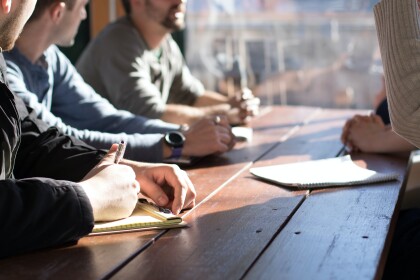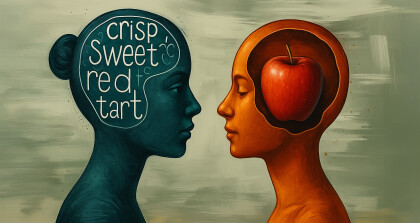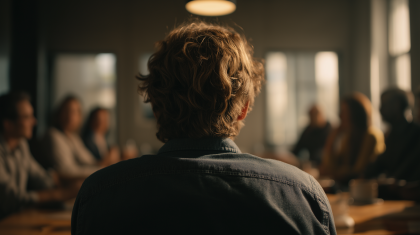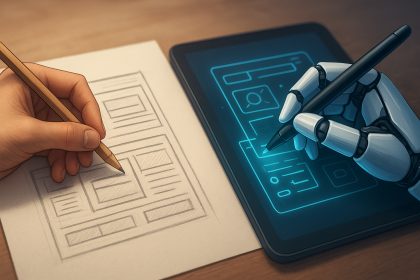I’m a working mum to three small humans. Daily, I’m grateful for the myriad of innovations and conveniences that make our lives more efficient, enabling us to fit more of the good stuff in. That gratitude is balanced by an uncomfortable awareness that while we pay a price (measured in dollars), the environment is also paying a price. The environmental impact of living-busy can be eye watering.
It’s a tricky thing, living and parenting consciously. It’s surprisingly easy to be comfortably divorced from the realities underpinning our daily lives – like our agricultural systems and practices, or our waste management cycle. Coincidentally, these are things that really interest me. It gets pretty uncomfortable, pretty quickly when we start seeking information. We’re so damned busy and there is so much information available, it’s easy to feel overloaded, unable to process what we learn into actionable knowledge.
As a parent, I really want our children to be aware of the weight we’re placing on this earth. I also need them to feel like changing the balance of that weight is possible. At its simplest, when we can’t see a problem, we’re not going to change it. As humans, when change seems too hard, or the relative impact of our individual actions too small, we seem very ready to excuse ourselves from making the effort. I want to help our children to see the myriad of problems in how we currently live, but also to show them that the cumulative impact of many, thoughtful, little changes can be meaningful.
Starting at Home
Reducing our environmental impact at home is no new thing to our family, although it’s always been pretty adhoc. We’ve long been carting about our reusable shopping bags; growing our own veges and shopping at farmers markets; we’ve consciously reduced the quantity of animal products we consume. We’ve cancelled Yellow Pages, we buy in glass or paper and avoid single-use plastics whenever possible. We’re proudly “no-circulars”, we embrace giving and receiving hand-me-downs and we recycle. Obviously, we recycle.
Mid-last year the headlines started pulling me up short. What do you mean we’re “no longer sending our plastic waste to China and stockpiles are exploding”? Honestly, embarrassingly, how was I not aware we were shipping our plastic waste offshore in this kind of quantity? What amazing pixie magic was I thinking happened to all that stuff I lovingly cleaned (and got my eldest) to stack in our yellow bin? Because recycling is great right? So I started reading about the environmental disadvantages of recycling plastics at all…. VOC emissions… downcycling …. waste. Then the news started about illegal burning of NZ waste in Malaysia. How can I possibly reconcile my waste-creating quick school-lunch-hack poisoning the air of someone else’s children?
I am not entirely sure how or when I slid into thinking recycling was a suitable first line of attack. In the hierarchy of waste management strategies, recycling has always been way down the list – under reduce and reuse. Somewhere along the line I started bypassing reduce and reuse. Busyness and a side helping of cognitive dissonance was letting me enjoy my clean little corner of the world, one full yellow-bin-at-a-time, while entering the waste management cycle way too late.
How to tackle? I want our family to live more consciously to reduce our impact on this planet. I want our children to be the kind of conscious optimists who do not sit by waiting for a silver bullet to solve their problems, but get stuck in to tackling difficult, systemic issues. It seemed obvious then, that change needed to be visible and involve the whole family and we needed to start with steps to Reduce and Reuse at home.
The Curious Power of Deliberate, Incremental Changes
Mid-last year, my partner had the opportunity to travel with our eldest to the UK for several weeks. While I was happy to take one for the team and stay home with the baby, the preschooler and keep on top of work, I knew I’d be tired, time poor and my usual outlet for recharging and rebalancing (long walks up steep hills) was not going to be available.
Over a few weeks, I made a bunch of little lifestyle changes aimed at “improving my daily habits to survive while flying solo”. The changes were small. For example, mid-week wines were terminated (woe), caffeine reduced to one coffee per day, daily HIIT training introduced. Just one little adjustment was added each week they were considered, defined and infinitely manageable.
When my partner got back, I kept those, and I started extending the discipline of little incremental changes into his daily routine as well. Cumulatively, dozens of little changes had a significant impact on our work:life balance. The effortlessness of sticking with those changes and the creativity required to come up with next week’s idea proved surprisingly enjoyable. It struck me that small weekly changes are an easy ritual to weave into our family-life in pursuit of living more consciously.
I do like a good bit of goal setting. For years I’ve set clear objectives in my professional and personal life. I’ve always avoided big, vague resolutions in favour of SMART goals and clear execution planning. Yet, here I was discovering joy in chipping away at a pretty damn vague intention – “living more consciously and reducing our impact on this planet” with a side helping of “let’s do more to reduce and reuse so we are relying less on recycling”. One thing I have particularly enjoyed is the creativity, the research and the planning to find the next idea and implement it. Only committing to make a small change each week requires me to bite off a manageable amount of research and understanding.
Some Examples of Little Changes We’ve Made
- Formalised our “reduction in meat” to 1 vegan, 4 vegetarian main meals per week
- Yoghurt has always been a stalwart of our children’s lunch boxes, and now gets made in a yoghurt maker and packaged in Kai Carriers or reusable pottles. Kai Carriers are useful for loads of things (well past the baby-purée stage) – although rebranding them as a “cool sustainable choice” and not “baby-food pouches” to my 7-year-old was not entirely successful.
- Glad wrap is a thing of the past. Between bento-style lunch boxes, reusable containers and a lot of sandwich-plates-on-top-of-bowls (for leftovers), I’ve really not missed it.
- Encouraging the grandparents to avoid Christmas and birthday gifts and instead gift experiences and shared activities that build memories.
- Tea bags (turns out many are sealed with plastics) were next to go. Honestly, for a woman who runs through dozens of cups of tea per day I thought the reduction in convenience would make this hard, but with the right teapot and a killer range of loose-leaf teas, we’ve replaced a total-lack-of-consciousness, quick fix with a nice little ritual.
- Replacing various, inexpensive but short-use life items like toothbrushes and pegs with alternatives (bamboo for toothbrushes/ marine-grade steel for pegs).
- Recent additions to the family are the Woolzies dryer balls. Obviously, where possible, we dry on the line, but a five person family = scary quantity of washing & drying. If I can realise an efficiency in the expedited process that’s a win. Woolzies are a plastics and chemicals-free version of the conventional dryer ball.
- Bottled shampoo/ conditioner/ moisturiser have all been happily replaced with solid bars. They’re great to travel with and gentle on my ridiculously sensitive skin so that’s a win. Plus, they’re locally made.
- So many things in sourced in bulk to save on packaging, from sun cream to washing powder to honey.
- Bread has been trickier (why-oh-why is it all wrapped in plastic?). I’m using the bread-maker plenty, but slicing that stuff for sandwiches is not a competency I claim. Handmade bread rolls and buns have been a reasonable replacement for lunchbox needs.
- Real Christmas Trees. Bless the Americans, their dedication to the joys of a real tree outstrips even mine. They have a National Christmas Tree Association which publishes links to any number of resources justifying why you should choose a real tree. If you’re still not persuaded, allow me to assure you that growing one in a pot made for the easiest “let’s pick up the tree” day in living memory.
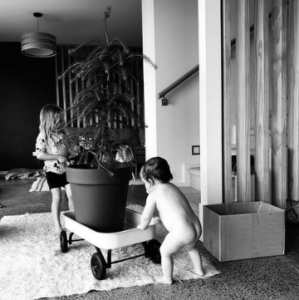
Some Changes Haven’t Gone Quite So Well
- For several years we’ve been self-sufficient in garlic. Except for that year I had another baby and got none whatsoever in the ground, then got somewhat positional about not buying any. Garlic being something I (otherwise) use daily.
- Our kids are mad-keen on those ridiculously soft, sweet cereal bars with chewy fruit centres. Do you know there are people on Pinterest who will lead you to believe it is possible and even pleasurable to make those with your kids? They lie. It’s fiddly, time consuming and then you’ve got a 50:50 strike rate on your offspring loving them, or feeding them to the dog. I’ve gone ahead and saved all the wrapping going to landfill by banning the cursed things outright.
- We eat prodigious quantities of blueberries and we’re lucky enough to have some local “pick your own” farms. My favourite is Blueberry Bliss who became my double-favourite this year by offering $1kg off if you BYO packaging. My estimation let me down here as the family happily consumed what I thought to be a four-month supply in just under four weeks.
- Almost every idea our kids have had for reusing/repurposing/upcycling waste. Which I then feel honour-bound to help them try.
These are just a handful of the little changes we’ve made. The most enjoyable thing is that in owning the change, and talking about it with my family, I’ve also built in the imperative to continue to find and make new changes. That discipline forces me to innovate, to hunt out the next idea, to scrutinise our habits for the next opportunity – and (above all) discuss the previously unconscious patterns of our consumption with our children. If I can embed a desire for scrutiny and behaviour adaptation in our children’s lives, and if we can then take this mindset from our home out to our lives at work, school and within our broader community, then I think it will be well worth the effort
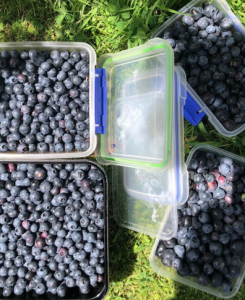
Bigger-Little Changes
My biggest changes (to date) needed the Christmas break to tackle. For a long while I’ve been mulling moving to a glass pantry, but viewed the inefficiency of weekly trips (with bottles and jars) to wholefoods grocery stores as a major impediment. Then, late last year, I discovered Good For, bringing together my quite remarkable proficiency in online shopping with a decent selection of (drygoods) wholefoods pantry staples, all shipped in brown paper bags. They are opening a physical store in Christchurch this year, which will take care of the liquids that I can’t currently have delivered, and offer click ‘n’ collect service.
January 3 dawned, and I muscled up to my pantry and took everything out. And the plastic, oh the plastic. It took three days for me to empty, sort, combine and re-store everything. Throughout, I was left gaping in horror at the quantity of plastic packaging. When you gather it all together in one big pile… the desire to make change really crystalises.
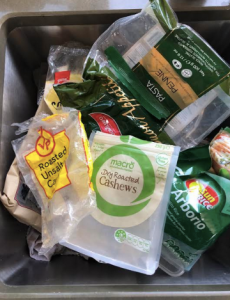
The biggest surprise was discovering that in a lifetime of grocery shopping I had literally no idea what weight of items I buy, just the size of the package. Obviously when you’re buying to fill the pantry and create or maintain an efficiency, quantity by weight becomes quite relevant. I also had to come up with a way to embed efficient shopping across multiple vendors (dry goods/ fresh goods/ household supplies). The solution is four mini-whiteboards on the pantry door to keep track of what we are running low on, what we need (and from where) as well as the “standing quantities” our family requires. The reduction in duplication and waste (as well as plastic) has been rewarding.
The reality is, buying from specialist stores is rarely cheaper or more convenient (measured in time) than hitting the supermarket. For me, it’s worth the trade off, because I enjoy food from growing to sourcing, preparing to eating. I enjoy sharing each of those rituals with my family as well (disclaimer: except sourcing when it involves all three kids and a supermarket, that’s ludicrously awful). I am very happy with the quality of the food we are buying and the connection and support this buying method offers smaller producers and vendors. I am certainly spending less time and far less money in supermarkets now, which is a win in itself. I am spending slightly less in dollars but honestly, most of that is due to better disciplines pantry-side (particularly efforts in avoiding duplication and waste) and fewer “convenience” hacks finding their way into the trolley.

This summer I was the happy recipient of the World’s Most Romantic Christmas Gift (a worm farm). Honestly, so far my Tiger Worms (kid-engagement being all in the branding) have been surprisingly fussy little things and after the initial excitement the kids have not sustained their enthusiasm for our “super cool, waste-eating pets”. However, the sheer joy of feeding my Tigers (not just some of our green-and-garden waste but all of the bags from our good-for grocery box) is a thing of beauty. Plus the kids are super-enthusiastic about shredding the paper bags as I unpack the delivery.
A Dose of Realism
This post is not about self-congratulation, I’m operating under no kind of belief that this mindset (or any number of little changes we could make) will do a material thing to change the world we’re living in. Climate change is not going to be tackled by individual action in our homes and shopping trolleys and I’m certainly not seeking to persuade our children that it can be. We are facing a systemic global issue; we desperately need collective action by multiple institutions. Most of all, we need a generation who agree on the problem and believe that it can be tackled. I sincerely hope this little exercise helps our children to grow into their self-reflection, question their needs and habits, continually seek information and embrace mindful change. And stay out of supermarkets whenever possible.


